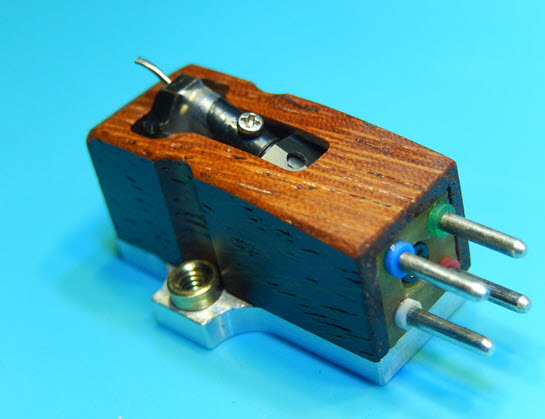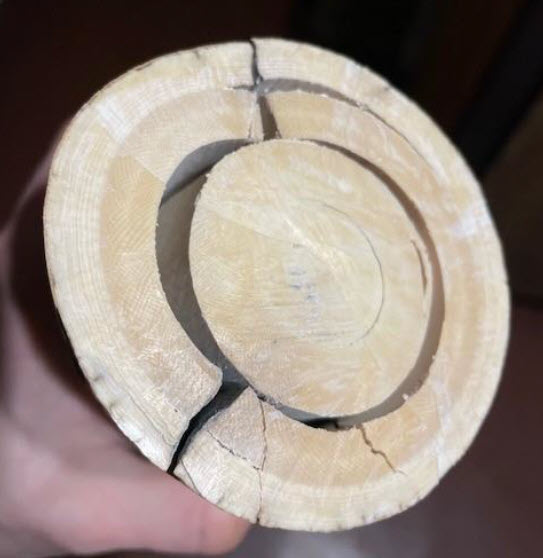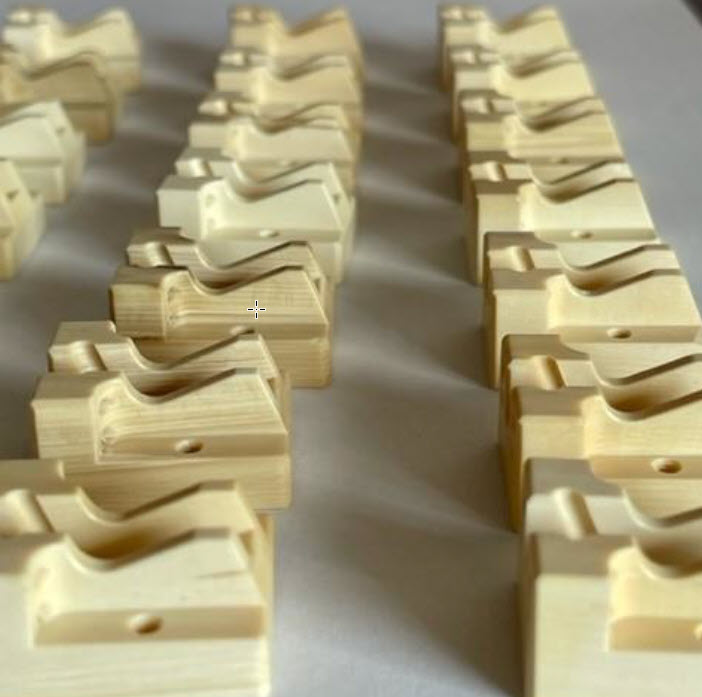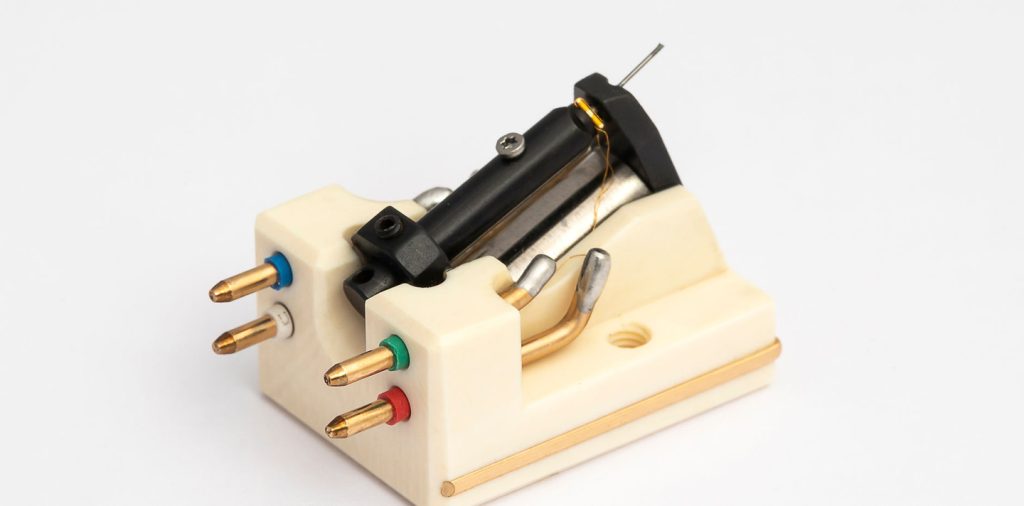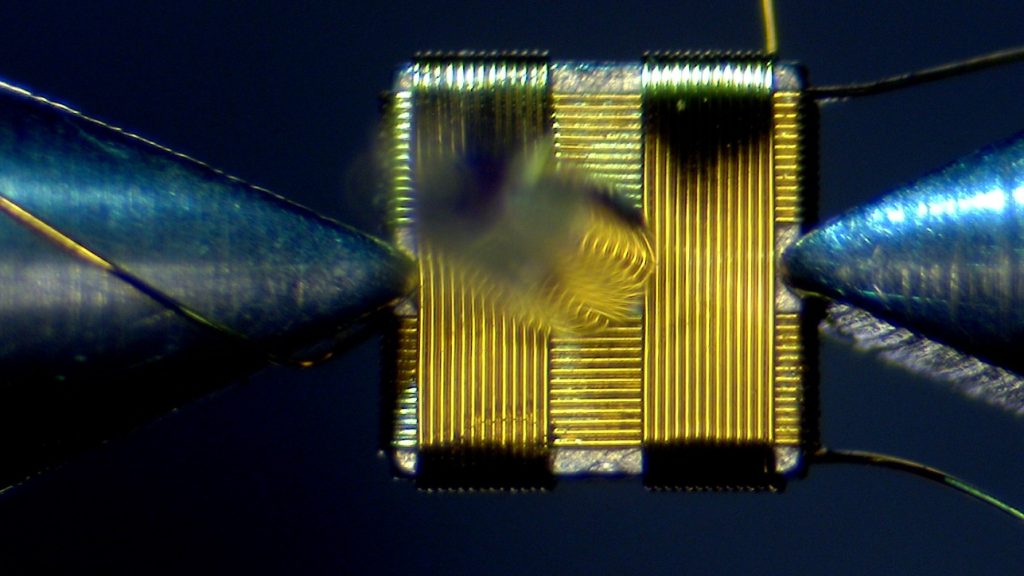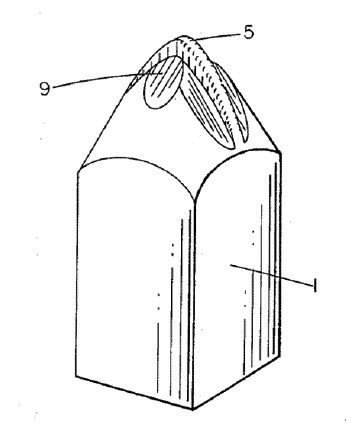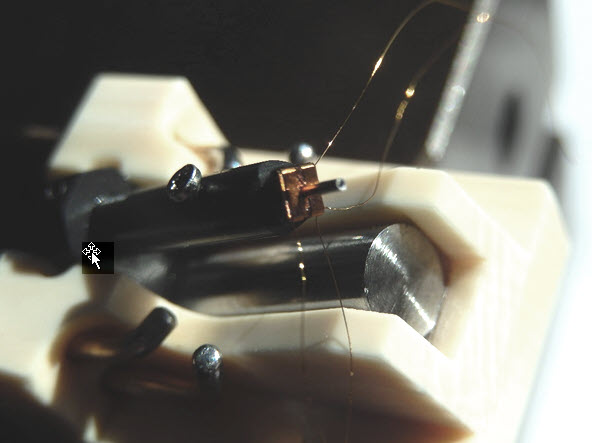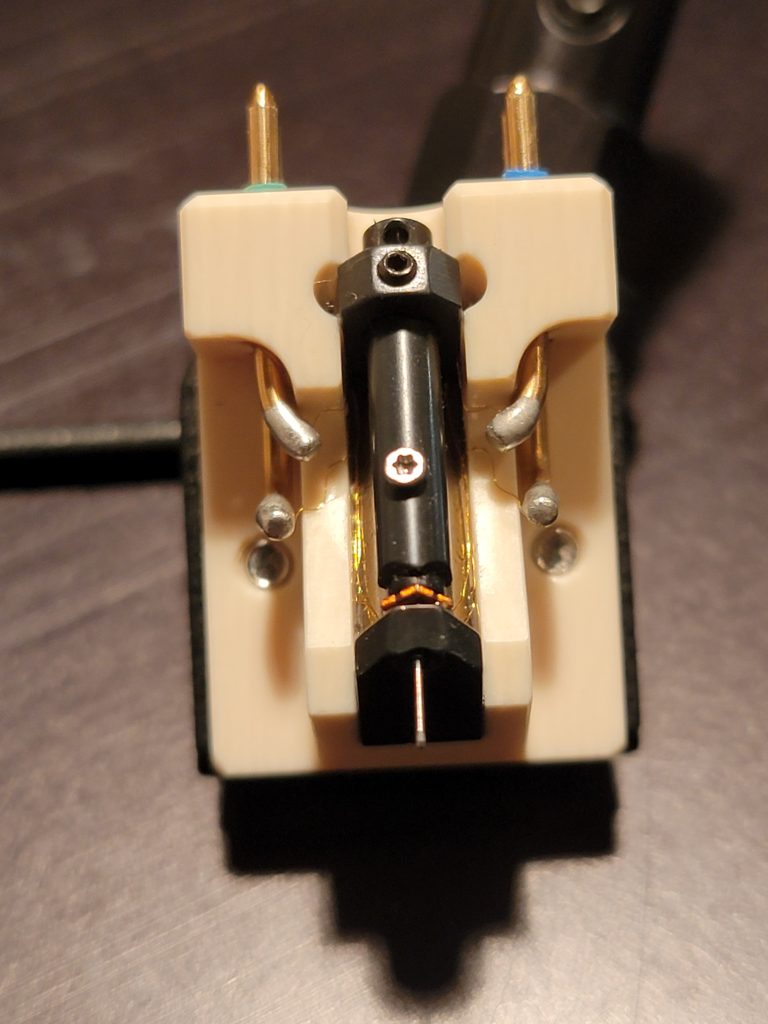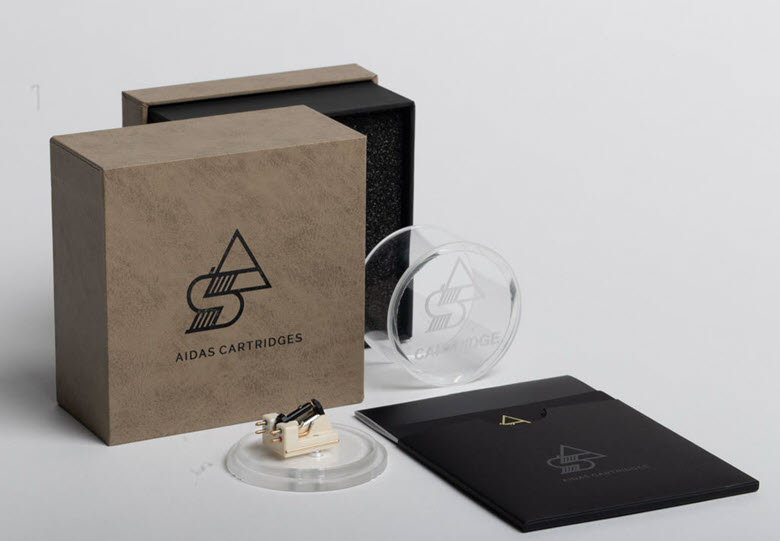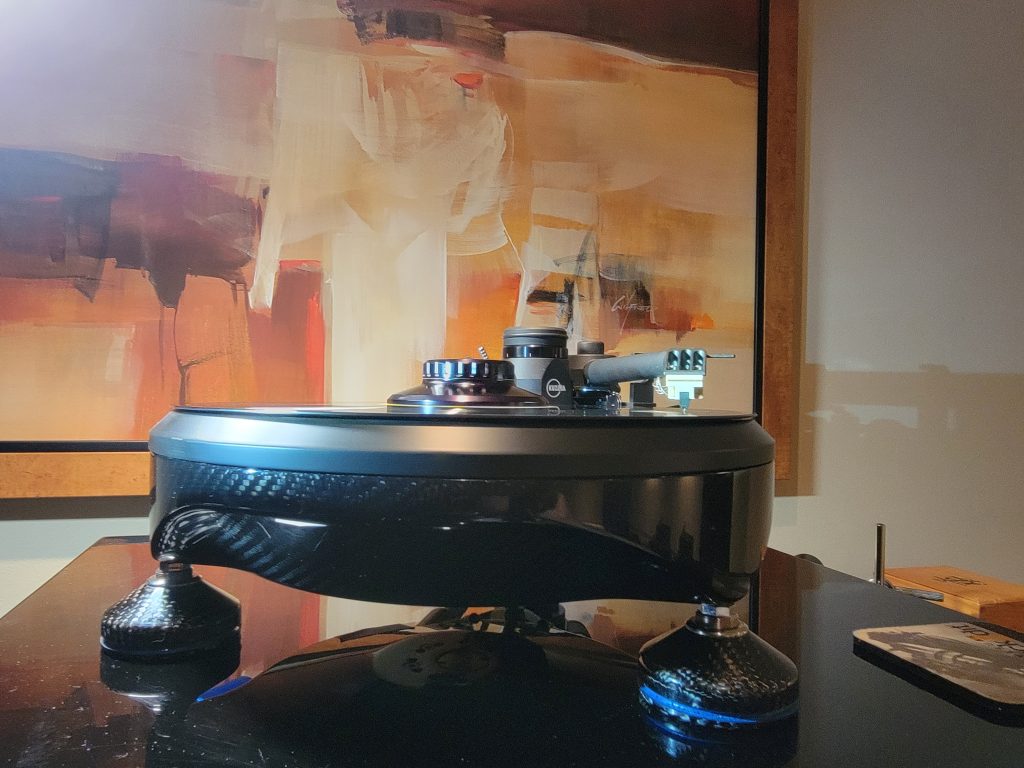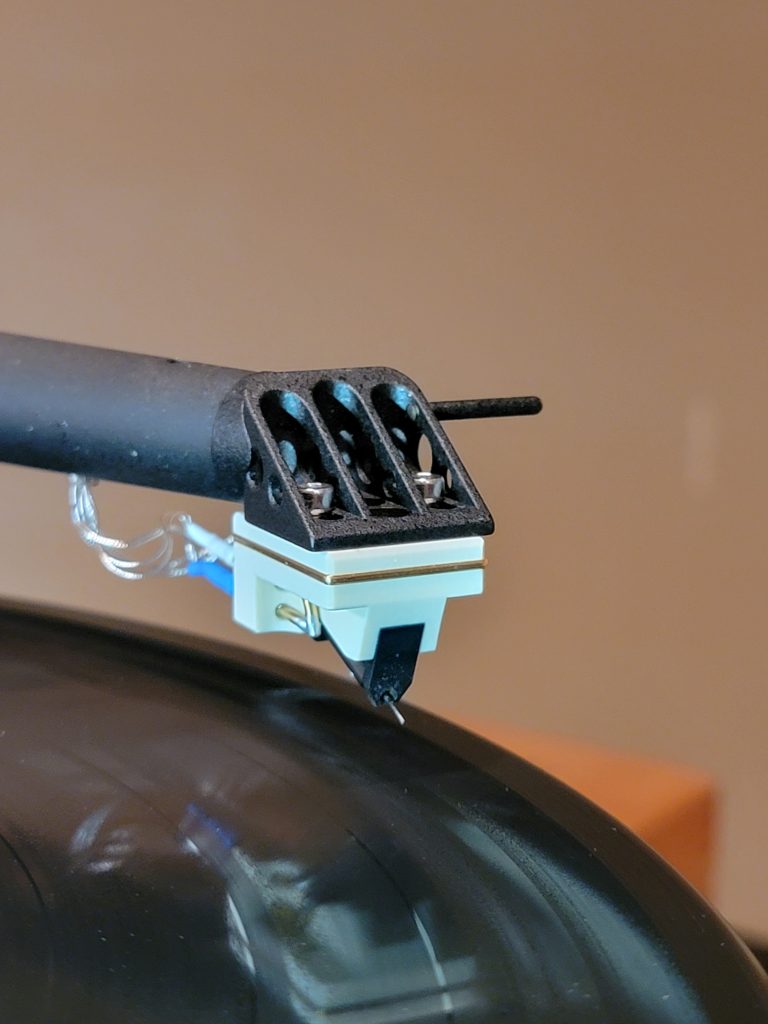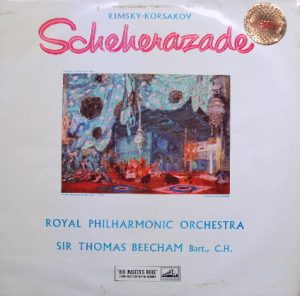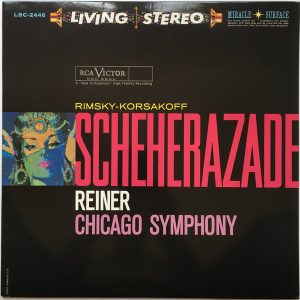Aidas Mammoth Gold 24k Gold Coils, Top Reference Moving Coil Cartridge: 0.28mV
Listed · 208 Views
Time Left: 17 Days
Ending: 05/14 at 07:05 PM ET
New Retail Price:$8,700.00
$3,695.00
| Condition | |
| Payment methods | |
Contact seller after sale to pay viaVISA/Mastercard or Wire Transfer | |
| Ships from | Los Angeles, CA, 90077 |
| Ships to | United States and Canada |
| Package dimensions | unspecified |
| Shipping carrier | UPS |
| Shipping cost | Specified after purchase |
| Original accessories | Box |
| Research Pricing |
Featured SALE:
Aidas Mammoth Gold Moving Coil Cartridge Top model & Weinhart Design's Reference and currently we are using the same model in the top Reference system at Weinhart Design:
Less than 300 hours from the Estate of a Sound Editor and friend.
Features include, pure 24K gold coils, and the best sound we have heard at Weinhart Design..
Comes in attractive Marble box. Please note one small corner of the box is missing but does not limit it's use.
Highly Recommend and sold to and used by many of our Top Audiophile's systems.
Positive Feedback on 01-31-24 Tim Aucremann said:
Phono cartridges, like musical instruments, use their body's resonance to influence the unique character of their sound. The cartridge body holds the cartridge's suspension and its electrical generating system—its stylus, cantilever, coils and magnet—while sitting between those and the tonearm. The body is a source of resonance that vibrates at its own frequency while it is also impacted by the resonance of its tonearm. By the choice of body material, designers aim to transfer energy out of the cartridge into the tonearm, or to prevent vibration from the tonearm entering the cartridge. Mechanical energy within a cartridge body has a cumulative effect on its motor, for example, on the distance between coils and magnet, which in turn impacts the generated electrical signal. Mechanical energy reflected from the mass of the motor back down the cantilever may literally cause jitter in the stylus. It is difficult to grasp the scale, but a stylus displacement of greater than 0.0005 microns, when amplified, can be heard.
While he cannot control external sources of vibration, such as tonearm bearing chatter or footfalls, needless to say, the cartridge designer aims to control spurious vibrations within his product, and the careful selection of cartridge body material and shape is a critical aspect of its construction.
Enter our review subject, the Aidas Mammoth Gold stereo cartridge, one in an extensive lineup of many cartridges built by Aidas Svazas in Kaunas, Lithuania. The company traces its roots back to the late 1990s. With years of study and experimentation into various core geometries, coil configurations, and suspensions, Aidas released its first cartridge in 2010, the AS-1.
Today, Aidas offers a variety of different bodies and coil materials across four cartridge lines: the Copper Series (four cartridges made with different composite woods, copper coils), the Silver PL line (1 cartridge of pulverized precious stones called Tru-Stone, silver plated copper coils), the Gold PL line (Tru-Stone or wood bodies of Purpleheart and Gabon with gold plated copper coils), and the Gold Series with gold coils and bodies of Ivory or Tru-Stone. Aidas also makes a couple of limited edition cartridges using Tibetan Yak and American Buffalo. All current Aidas cartridges share the same generator construction and the same double suspension. They differ in body material and coil composition. This is somewhat similar to the Koetsu approach.
The Aidas Mammoth Gold is their most advanced cartridge with a body made from ancient mammoth tusk. The review sample came with a certificate from Geochron Laboratories showing a radiocarbon age determination for a mammoth tusk excavated from the Siberian permafrost in 2018 with an age of 21,000 years ± 100 years.
Cross section of Mammoth tusk
Here is what Aidas says about the tusk body:
Mammoth tusk is the best and most unique material Aidas could ever find for his top cartridges. According to his experimental data, as it has very unique properties sound-wise, it is better than true-stone, exotic wood, or light metals. It was even compared to other types of bone / horn (deer) material and is far more superior. It is super strong and damps unwanted vibrations perfectly. Compared to deer or buffalo horn material Mammoth is denser—no air bubbles and fewer impurities. As bone, the resonance character of mammoth tusk is most like the auditory ossicle bones located in the human middle ear.
While doing research for this review, I learned that acoustic guitar and violin makers also use mammoth ivory for the saddle on those instruments. One chooses ivory for its strength, beauty, and energy transfer characteristics. Guitar strings sit on the saddle which sits on top of the bridge. String vibration transfers through the saddle into the bridge then into the sound board. Archetiers (bow makers) also use mammoth ivory for a bow's tip plate and its frog—where the bow hair attaches at each end of the bow stick.
No two Mammoth Gold bodies are alike. As an organic material they show color variations with different striations and markings.
This review covers the "Mark 2" version of the Aidas Mammoth Gold. Robert Levi reviewed the original model for Positive Feedback in 2019. The company dropped the version designator in the name and you can tell the difference between versions with the latest having a gold band at the top of the cartridge body. The earlier model had a different suspension setup but I have no information on that or how the generator attaches to the ivory body. As I've learned in 20 years of reviewing, high end manufacturers are understandably reluctant to expose proprietary design and material details.
Current Mammoth Gold
Aidas' company literature tells us what they find important: One of the cornerstones of our cartridge design is the choice of body materials. The core geometry and magnetic field shape are critical factors in the performance of a phono cartridge. One of our standout innovations is the double suspension supporting the generator-cantilever assembly.
The coils in the Mammoth Gold are hand wound using special machinery. The result is a coil that responds accurately to the subtlest nuances of music. Our coil winding precision attains the highest level of accuracy, ensuring that the coils are meticulously matched based on their C/L/R [Capacitance /Induction /Resistance] parameters.
The cartridge features a MicroRidge stylus from Adamant Namiki (now Orbray) that claims to offer less wear and a longer life thanks to its minuscule curve radius. Patented by Namiki, a cross section reveals the MicroRidge stylus has a very complex shape that requires laser cutting and claims to almost exactly duplicate the shape of a master disc cutting stylus. A less refined description might say the MicroRidge shape reminds one of a mini-Phillips head screwdriver. Close inspection of the tip reveals tiny ridges of only a few microns depth.
MicroRidge stylus profile from the Namiki patent, 1983
The Mammoth Gold stylus fixes to a composite boron cantilever that is both stiff and lightweight to minimize resonance. A double damper suspension system supports the cantilever assembly. One element of that suspension uses a special rubber compound that Aidas hand selects from seven compound variations. Even the smallest variations in the chosen compound's physical parameters can significantly impact the cartridge's sound.
Aidas Mammoth Gold's AlNiCo5 magnet
The MSRP price of the Mammoth Gold is $8650 USD. The price reflects a production time that is five times greater than any other Aidas cartridge. After initial assembly, Master Aidas spends 15 hours fine tuning each individual unit.
From the Aidas Web site, here are the specifications for the current Mammoth Gold:
- Body: 21,000 years old Mammoth ivory task
- Cantilever: Namiki / Adamant boron composite
- Stylus: Namiki MicroRidge
- Output: 0.28mV
- Magnet system: AlNiCo5
- Pins: 24kt pressed gold over brass
- Tracking force: 1.9g.
- Compliance lateral: 12 um/mN
- Cartridge weight: 11.2g.
- Recommended loading: 100 – 1,000 ohms
- Coil impedance: DC 3 ohms
- Mount: thread M2.5x0.45, 1/2 inch / 12.7mm standard between the holes
- Recommended tonearm mass: medium
System Setup
The Mammoth Gold arrived in a cylindrical plastic case in a cardboard box. There is no stylus-guard. I'm of two minds regarding stylus guards. They offer a degree of protection and comfort yet their removal and installation warrant caution. Think about how you will move your hands before moving them and go slow.
Before attaching the Mammoth Gold to my Kuzma 4Point tonearm I leveled the 4Point's headshell horizontally and vertically to the platter using the WallyReference tool from WallyAnalog.com. This is the critical first step in my cartridge setup routine. I set vertical tracking force (VTF) to the recommended 1.9g, and then aligned the cartridge using Loefgren B geometry using the Uni-Pro tool from Acoustical Systems. I find cartridges with protruding or naked cantilevers easier to align then those with tucked-in, under hung cantilevers. I checked azimuth visually, with a Fozgometer 2, and finally I tuned by ear. It was a happiness to find out of the box azimuth very close to correct. I iterated through the VTF and azimuth steps a second time to double check my work. Over the course of listening I dialed the rear of the tonearm slightly up; that offered greater clarity, a better sense of resonance from strings, vocals gained a bit of ease, and as they say, your mileage may vary.
Aidas Mammoth Gold on Monaco 2.0 with Kuzma 4Point tonearm
The 4Point's tonearm leads went into the moving-coil input of my Lamm LP1 Signature phonostage with ~430 Ohm impedance load. The LP1 applied 60dB gain to the Mammoth Gold's 0.28mV output; this yielded a generous output range from both the Lamm L2.1 Reference and Lamm LL1.1 Signature line stages. With those electronics I used both the Lamm M1.2 Reference and Lamm ML2.2 monoblock amplifiers. Speakers are JBL M9500s.
The review sample had ~20hrs on it. I started taking listening notes at ~100 hours.
Sound and Music
My approach to reviewing is to describe what I hear in musical language and audiophile terms. When I describe music I am giving my impressions of what I hear with the component under review. I use the sound of live acoustic music as my reference for assessing realism in reproduction rather than comparing to another piece of stereo equipment. That does not mean comparing a specific live concert against a recording of that concert. Rather, it cashes out as using my auditory template accumulated across years of exposure to live performances, from sitting next to musicians while they play, and from my own training in piano and clarinet. Our ears do not let us confuse stereo reproduction with live music, but different stereo components and systems do sound more or less believable than others.
Listening to the Aidas Mammoth Gold across many records, including different performances of the same music, I heard it clearly differentiate recordings from one another. While you expect different records to sound different from one another, in my view what the Mammoth Gold offers is actually an important sonic characteristic described in two ways. It demonstrates the cartridge tends not to homogenize sound by strongly imbuing its own character onto all records. And, it offers a level of transparency into each unique recording. You might say this cartridge takes the music as recorded rather than it makes the music what it is. This puts it on the road to realism.
Overall, I found the Mammoth Gold balanced toward my listening preferences with a realistic presentation. I find music's core character derives from what is described in a musical score, namely tonality, dynamics, and timing, and I regard realistic bass as a prerequisite to the natural sound of acoustic music.
The Mammoth Gold offers a fine integrative sound that is well balanced, a sound that is neither aggressive nor analytic. While it is not laid-back, it doesn't get out in front of itself. When taking notes in my room, I often found myself putting down my notebook and listening rather than capturing its sound with the usual audiophile words—words whose meanings are often contentious or over-wrought. But dear readers, you expect analysis and so you shall have it.
The Gold's frequency balance leans slightly toward the mid-bass side of A-440 Hz which is roughly the middle of the piano keyboard. I consider this a natural balance as it reflects what we find in the majority of Western acoustic music. Tonality is cordial with a wee touch of warmth without being cloying or fuzzy. Fundamentals and harmonics are excellent with articulate differentiation into the back rows—it was easy to hear timbral differences from different orchestras and between instruments of the same kind.
This cartridge does a really nice job with overall ambiance, offering a genuine sense of musicians in space, or of an orchestra in a concert hall. Its soundstage is wide and deep. Back and sidewall reflections come through when those attributes are in the recording. Congruent with that is a fine sense of note development through decay. Leading edges are appropriate to the instrument—the tightly tongued attack of a trumpet is very different from how a flutist launches an accented note, and the Gold lets you hear that if you focus on it.
As it draws you in to the music, it does not draw your ear to any particular sonic attribute. Modern audiophiles tend to emphasize detail as a hallmark of component/system goodness, and such components can do that to the disadvantage of midrange tonal balance. The Mammoth Gold's presentation is more of a piece than the sum of audiophile minutiae. It is not a high strung greyhound, an "exciting" cartridge with a spectacular first impression, but given time it reveals a balanced, natural nature that works quite well across an array of musical genre. Its sound does not wear on you across time.
I compared Rimsky-Korsakov's Scheherazade from Thomas Beecham with the Royal Philharmonic (HMV ASD 251) to the standard Fritz Reiner with the Chicago Symphony (RCA LSC 2446, Classic Records). The Beecham offers good depth, air, and context, yielding a rich sense of an orchestra in a hall with back and side-wall reflections. Beecham's conducting is sweetly lyrical yet with drama, while the orchestra offers plenty of energy and excellent decay—a fine combination. I heard delicious tonality from horns, trumpets, piccolo, and particularly the clarinet and violin solos in the 3rd and 4th movements.
Reiner is not as lyrical as Beecham, and the Chicago Symphony's massed violins are not quite as sweet or textural. Reiner brings excitement and vivacity. Here the soundstage is wider though without the hall depth of the Beecham. Tape pre-echo was obvious—this is where the reeled tape over time imprints its magnetism onto preceding tape. Initial transient plucks from cello and bass are more obvious than on the Beecham, though perhaps a wee tiny bit rounded off. The highlight of this performance is the Chicago brass. At the time there was perhaps no better group of trumpets, horns, trombones, and baritones on the planet. From the Reiner, the Mammoth Gold delivers wonderful growly brassy tonality with mind-boggling staccato articulation. The Philharmonic brass is simply not on par.
The Gold does not have quite the reach into the stratosphere as, for example, the van den Hul Master Signature (~$12-$14k when available). The cartridge is capable of upper octave breathy harmonic filigree from the likes of violins and harps—those higher order harmonics that reach into the upper three or four digit Hz range. While I listened, I had no sense the Mammoth Gold lacked upper octave energy, or that something is missing but, the differences are obvious by relative comparison. The Gold's bass offers tighter definition with a more articulate attack than the Master Signature. Overall, Gold transients are natural without etch or sharpness and particularly noteworthy in the lower registers.
Speaking of low registers, if you want to hear what the Gold can do with low frequency notes, try organ music. It may not be for everyday listening, but it can give you a feel for how well your system delivers low note tonality and weight and authority. I listened to Bach's Tocatta & Fugue in D Minor, BMV 565 (Telarc DG-10088) performed by Michael Murray playing the giant organ at the First Congregational Church in Los Angeles, with over 18,000 pipes. Here the Mammoth Gold is an impressive standout.
This might be the most famous piece of organ music known to modern audiences. Leopold Stokowski's orchestral transcription popularized the piece in the 1940 soundtrack for Disney's movie Fantasia. This Tocatta and Fugue features a low C pedal note at 16Hz that requires a 32-foot pipe to produce. My JBL speakers resolve down to 20Hz. Most of us cannot hear below 20Hz on a good day, so you probably won't hear the 16Hz fundamental, but you can feel it through your body and its hear higher overtones (2X, 3X, 4X, etc.) with your ears.
Murray's fluid performance shows his mastery of his instrument and Bach's music. Not only did the Mammoth Gold deliver the lows, mids, and highs with clarity, it did so with a fine tonal density and resolution. Ambiance into the surrounding air is excellent as power, authority and a wee touch of menace come through in spades.
I'm going to try something different in this review by offering YouTube videos of my system reproducing music with the Aidas Mammoth Gold in play. You won't hear the music sound as good as it does from my in-room experience, but I believe the video sufficiently represents the cartridge's capabilities. At minimum you will need quality headphones or desktop speakers, or ideally your own system. Phones and laptop speakers will not cut it. If YouTube videos are not your cup of tea, okay, feel free to skip this.
Here is Murray's performance of the Bach Toccatta & Fugue in D-minor. If the link does properly direct, paste it into your browser's address.
https://www.youtube.com/watch/bn-ilw9vPz8
For a taste of simpler acoustic and vocal music I listened to the Grammy nominated album The Harrow and the Harvest from Gillian Welch accompanied by her producer, David Rawlings (Acony ACNY-1109). The couple's own VMS 80 lathe cut the album straight from the analog tapes.
Welch's unique vocal twang and somewhat, deadpan delivery comes through open and clear. Listening to the tune "The Way it Goes," the Mammoth Gold let me hear the pair's guitars with a luxuriant interior resonance from their sounding chambers. The sound is a teeny tiny bit thick and closely mic'd with an ambience of close strings and voices as if recorded within a limited spatial bubble of acoustic treatments or perhaps a booth. Yet within that bubble there is an excellent sense of energy and vivacity from the pair playing together. With the slight difference in transient attack I'm thinking (maybe) they play one guitar with a pick and the other with fingers alone. This cartridge rarely evidences a sharp or etched attack while mid-note development is tonally dense and decay is very nicely drawn. Although there are no big dynamic contrasts, I hear subtle micro dynamic gradations between the pair in their fluid playing. The Gold integrates the sonics into a whole greater than the sum of the music's audiophile attributes. I like that.
Here is a video of "The Way it Goes" with the Mammoth Gold in play:
https://www.youtube.com/watch/bZPaASAXY_k
Changing gears to a super high-energy orchestral piece, I played the 3rd Movement of Shostakovich's 8th Symphony as performed by Bernard Haitink and the Concertgebouw Orchestra (Decca – SXDL 762, London LDR 71121).
Listening to Shostakovich is listening to Russian history in the 20th Century. He wrote this symphony in the summer of 1943 shortly after the seven month bloody battle for Stalingrad, and it carries the nickname "Stalingrad Symphony." The 3rd Movement is a battle scene that erupts into a "massive climax of self destruction." One might say the overall work is more about survival than victory. It had little value to Soviet propagandists, and was banned in Russia until 1956.
The first thing I noticed with the Mammoth Gold in play was a fine sense of a full orchestra in a hall—a big sense of air, space, and energy surrounding massed upper strings that serve as the rhythm section with repeated arpeggios sliding up and down the scale. Continuously churning, the music drives forward while staying in place. Lower strings punctuate the opening. Sharp upper octave cries from a clarinet and oboe pierce the air, accentuated by timpani whacks. Here the Gold reveals its excellent capacity for both micro and macro dynamic swings.
The performance is complex and the Mammoth Gold lets you hear that. The sense of propulsion is amazing. The battle rages as it builds intensity, briefly dying then rising over and again. Snare drums and a glockenspiel add their color. The coherence and integrity with which the Gold renders the groove offer a unique sense of texture as the music grinds and flows in a moving tapestry of cacophonous sound. Add to this a fine sense of depth and layering.
The climax of "Movement 3" is massive and huge, introduced by a snare drum then the entire orchestra engages. Articulate plucks from lower register basses and cellos under gird violins and violas as everything shifts into an even higher gear. I was impressed with the ability of the Mammoth Gold to hold together the simultaneous lines and phrases from each instrumental group, each with their assigned dynamics. The resonance of the timpani strikes inside their kettles comes through, struck so hard they explode into the surrounding air. A full compliment of trombones pick up the attack, growling, snarling as upper octave trumpets scream out.
Here is another video that shows off the Aidas Mammoth Gold in my system. I encourage listening to the full seven-and-a-half minutes. The climax starts its build-up around 4:40, the snare drums sound around 5:54 then all hell breaks loose as the Russians fight for their city and their lives.
https://www.youtube.com/watch/AbYMCAhyWyU
Compare / Contrast
I compared the Aidas Mammoth Gold with the more expensive Fuuga moving-coil cartridge ($9995 US msrp). Where the Gold has an all ivory body, three different aluminum alloys compose the Fuuga's roundish shape. The Fuuga contrasts the Gold's Micro-Ridge stylus and boron cantilever with its Fine-Line hybrid stylus on an aluminum cantilever. While the Mammoth Gold has a protruding naked cantilever and stylus, the Fuuga's stylus is short and tucked well under the body, making it a bit more difficult to align. The Fuuga's output is 0.35mv. Based on my samples, both cartridges have excellent build quality and offer tight out-of-the-box tolerances for VTA and azimuth adjustment. I've used the Fuuga for several years and it is a good match with my Kuzma 4Point tonearm. You can read Myles Astor's Positive Feedback Fuuga review HERE. I also made a few compare/contrast notes with the more expensive van den Hul Master Signature, which is a high-resolution greyhound.
Like the Mammoth Gold, the Fuuga is not a super high-resolution cartridge. I give the Gold a very slight leg up in resolution, which is simply more or less sonic information in terms of tonal saturation and delicacy of finer detail. However there were times, say my notes, when I wished for a wee bit more interior transparency on densely orchestrated pieces from both cartridges.
The Fuuga has better leading edge transient detail on attack, though a bit less duration on decay than the Gold. The Fuuga offers a bit more sense of forward movement and propulsion but I never felt the Gold laid back. Both cartridges represent heft, weight and solidity very well in dynamic 'ballsy' passages. I am writing a lot of "bits" and "slightly" and that is because overall the two cartridges are more similar than different. Here I have been picking nits but I like both cartridges.
Wrap Up
The Aidas Mammoth Gold is a truly fine cartridge worthy of top high-end systems. I can only speculate on the role its ancient and organic ivory body plays in delivering tonal density and harmonic depth. Possessing a balanced natural character where all is good and no particular attribute jumps out or goes missing makes for a holistic presentation that is more than a sum of audiophile attributes. The Mammoth Gold is a delightful music lover's cartridge that will not tire you with long term listening—my highest compliment.
Mammoth Gold Cartridge
Retail: $8650 USD
Limited warranty: 1 year
Aidas Cartridges
Pramones Street 83-18
Kaunas City, Lithuania 50393
370.640. 62244
https://www.aidascartridges.com/
US Distributor
Notable Audio
Jeff Fox
115 Park Avenue, Suite #2
Falls Church, Virginia 22046
=========================
We are an Authorized Retail Dealer for Bowers & Wilkins, Synergistic Research, Aqua, HIFI Rose, Bryston, REL, EAR Yoshino, Parasound, Pro-Ject, Marantz, Analysis Plus, and many others. We also specialize in Estate Sales & Purchases. Please contact us if you have an estate of audio gear that needs managing, purchasing or if you just have questions. We have a long history and very good at it; we will strive to make it easier for you. Give us a call.
* * * We are always interested in purchasing quality Audio items, LP collections and quality trades are welcomed. * * *
Please call me directly in my world class showroom in Los Angeles weekdays:
from 11-3:00 PM (PST) @ 310-472-8880 or on my cell including weekends from 10-7:00 PM (PST) at 310-927-2260 and I can answer your questions and help you with all of your new and pre owned needs.
===============================
Weinhart Design has lots of other items new and used and if you’re in Los Angeles or visiting please accept my invitation to experience our World Class Audio Showroom by appointment and please visit our web site www.weinhartdesign.com
We are always interested in purchasing quality Audio pieces, LP collections, and know we are specialists buying Audio Estates and most quality trades are welcomed.
All sales out of California are State Sales Tax exempt. California State Sales Tax of 9.5% applies for items picked up or shipped to a California address.
We accept payments by Bank Wire Transfers without fees and is the only form of payment on all sales out of the U.S. and Canada. We prefer this method of payment and also makes shipping to addresses other than billing OK.
VISA, MC and PayPal are gladly accepted within the U.S. and Canada as long as the charge is approved and we're shipping to the BILLING ADDRESS and shipping to the billing address on record.
AMEX & Discover are also available for a 4% cost if shipped to the Billing Address and approved.
Please be advised that all credit card and PayPal transactions are subject to a 3% processing fee.
Making better sound one system at at a time,
David Weinhart
Weinhart Design, Inc.
President & CEO
The Audio and Video Expert
e: [email protected]
www.weinhartdesign.com
2337 Roscomare Road, Studio #1
Los Angeles, California 90077
Showroom: 310-472-8880
Cell: 310-927-2260
No questions have been asked about this item.
Ask the seller a public question
You must log in to ask a question.
Return Policy
Return Window
Returns are not accepted on this item.


